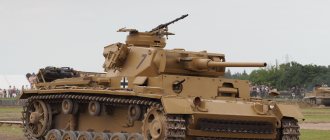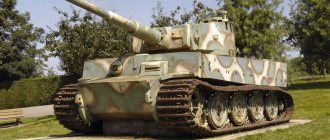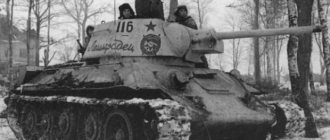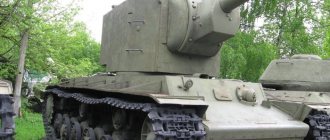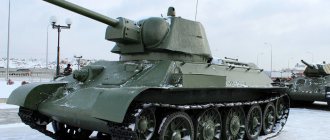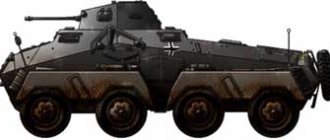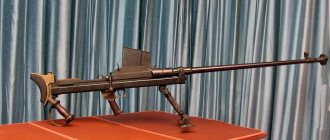Armored vehicles of Hungary during the Second World War. Medium tank "Turan"
At the beginning of 1940, Hungarian specialists became interested in the experimental medium tank Gb2s (T-21) of the Czechoslovak company Jlkoda. The latter was a development of the famous light tank of the same company 1Ъ2a (LT-35), which the Hungarians were able to get acquainted with in March 1939. Experts from the Institute of Military Technology spoke in favor of the T-21; they considered it the best medium tank of all those actually available. The Germans were not at all attracted to this car, and they did not object to handing it over to the Hungarians. On June 3, 1940, the T-21 was sent to Budapest, and on June 10 it arrived at the Honvedscheg Central Test Site in Haimaskeri. After tests, during which the T-21 traveled 800 km without breakdowns, on August 7, 1940, the parties signed a license contract. On September 3, the vehicle was adopted by the Hungarian army under the name “Turan”. Turan is the mythological ancestral home of the Magyars, located in Central Asia, from where they began their migration to Europe in the 6th century. Soon the tank received the army index 40M.
Medium tank T-21
In preparation for mass production, the original Czech design underwent some modernization and changes. A Hungarian gun and engine were installed, the armor was strengthened, and surveillance devices and communications equipment were replaced. This work was carried out under the guidance of the designer of the Manfred Weiss company, engineer Janos Korbul. First order for 230
combat vehicles, issued by the Ministry of Defense on September 19, 1940, were divided between four companies: Manfred Weiss (70 units), Magyar Vagon (70), MAVAG (40) and Ganz (50). However, there was still a long way to go from the issuance of the order to its actual implementation. The start of production was hampered by the lack of a complete set of technical documentation, since the latest drawings from Jlkoda were received only in March 1941. The execution of modernization drawings was also delayed. As a result, the first Turan prototype, made of non-armored steel, left the factory floor only on July 8. The troops began to receive new tanks only in May 1942. A total of 285 40M Turan 40 tanks were produced; in Russian literature they are sometimes referred to as “Turan I”.
The layout and design of the hull and turret, assembled using riveting on a frame made from angles, basically corresponded to the Czech prototype. The thickness of the rolled armor plates of the frontal part of the hull and turret was 50 - 60 mm, the sides and stern - 25 mm, the roof and bottom - 8 - 25 mm.
Medium tank T-21 in the yard of the Skoda plant. The vehicle is equipped with Czechoslovakian weapons: a 47-mm vz.38 cannon and two 7.92 ZB vz.37 machine guns. The MTO roof has been dismantled
The 40-mm 41M 40/51 gun was developed by MAVAG based on the 37-mm 37M gun intended for the V-4 tank, an anti-tank gun of the same caliber and the Skoda 37-mm A7 gun. One 8-mm 34/40AM Gebauer machine gun was installed in the turret in a ball mount, the other in the front plate of the hull on the left along with an optical sight, protected, like the barrels of both machine guns, by a massive armor casing. The cannon's ammunition included 101 rounds, and the machine guns' ammunition included 3,000 rounds.
Turan I
The tank was equipped with six periscope observation devices and a viewing slot with a triplex in the front hull plate opposite the driver's seat. An R/5a radio station was installed near the radio operator's position.
8-cylinder carburetor V-type engine Manfred Weiss-Z with a power of 265 hp. at 2200 rpm it allowed a tank weighing 18.2 tons to accelerate to a maximum speed of 47 km/h. The capacity of the fuel tanks is 265 l, the range is 165 km.
Medium tank "Turan I" during the crossing. 2nd Panzer Division. Poland, 1944
The Turan transmission consisted of a multi-disc main dry friction clutch, a planetary 6-speed gearbox, a planetary turning mechanism and final drives. The transmission units were controlled using a pneumatic servo drive. A backup mechanical drive was also provided.
It should be noted that, having a specific power of 14.5 hp/t, the Turan had good mobility and maneuverability. They were provided, among other things, with convenient controls that did not require much physical effort.
Turan I with armored screens
Lengthwise cut
Cross section
Layout of the Turan I tank: 1 — installation of a forward machine gun and an optical sight; 2 — observation devices; 3 - fuel tank; 4 - engine; 5 — gearbox; 6 — rotation mechanism; 7 — lever of the mechanical (backup) drive of the turning mechanism; 8 — gear shift lever; 9 — pneumatic cylinder of the tank control system; 10 — lever for driving the turning mechanism with pneumatic booster; 11 — machine gun embrasure; 12 — driver’s inspection hatch; 13 — accelerator pedal; 14 — brake pedal; 15 — main clutch pedal; 16 — turret rotation mechanism; 17 — gun embrasure
The chassis was generally similar to the chassis of the light Czechoslovak tank LT-35 and, for one side, consisted of eight rubber-coated twin small-diameter road wheels, interlocked in pairs and assembled into two bogies, each of which was suspended on two semi-elliptical leaf springs. One double roller was installed between the front bogie and the guide wheel, which had a gear ring, making it easier for the tank to overcome vertical obstacles. The drive wheel was located at the rear. The upper branch of the caterpillar rested on five dual rubberized support rollers. The design of the chassis provided the tank with a smooth ride without strong vertical vibrations or swaying.
In addition to the linear tank, a command version of the Turan RK was also developed, intended for commanders of companies, battalions and regiments. This vehicle had not only a standard R/5a radio station, but also an R/4T radio station, the antenna of which was mounted on the rear plate of the turret.
In May 1941, that is, even before the new tanks entered service, the Hungarian General Staff raised the issue of modernizing the Turan in order to change its armament, apparently under the impression of the German Pz.IV tank. The vehicle, designated 41M “Turan 75” (“Turan II”), was equipped with a 75-mm 41M cannon with a 25-caliber barrel length and a horizontal wedge breech. The turret had to be redone, increasing its height by 45 mm and changing the shape and size of the fixed commander's cupola. Ammunition was reduced to 52 artillery rounds. The remaining components and assemblies of the tank have not undergone any changes. The weight of the vehicle increased to 19.2 tons, the speed and range decreased slightly. In May 1942, Turan II was put into service and put into mass production in 1943; until June 1944, 139 units were produced.
"Turan I" from the 2nd Tank Division. Eastern Front, April 1944
Commander "Turan II". A characteristic external difference between this vehicle and a linear tank was the presence of three radio antennas on the turret. Only the front-mounted machine gun has been retained; the turret machine gun and cannon are missing (a wooden imitation is installed instead of a gun)
Along with linear tanks, 43M Turan II command vehicles were also produced. Their armament consisted of only one 8-mm machine gun in the front hull. The turret machine gun and cannon were missing, and instead of the latter, a wooden imitation was installed. The tower housed three radio stations - R/4T, R/5a and the German FuG 16.
Since the short-barreled gun was not suitable for fighting tanks, the Institute of Military Technology was instructed to study the issue of arming the Turan with a long-barreled 75-mm 43M cannon. At the same time, it was planned to increase the thickness of the frontal armor of the hull to 80 mm. The mass was supposed to increase to 23 tons.
In December 1943, a sample of the 44M Turan III tank was manufactured, but serial production could not be launched due to the lack of a sufficient number of guns.
In 1944, the Turans, following the example of the German Pz.NI and Pz.IV tanks, began to be fitted with screens that protected them from cumulative shells. A set of such screens for Turan weighed 635 kg.
As already mentioned, Turans began to enter service with the troops in May 1942, when the first 12 vehicles arrived at the tank school in Esztergom. On October 30, 1943, Honvedscheg had 242 tanks of this type. The 3rd Tank Regiment of the 2nd was the most fully equipped
tank division - it had 120 vehicles, and in the 1st tank regiment of the 1st tank division - 61 Turan 40, another 56 units were part of the 1st cavalry division. In addition, the 1st company of self-propelled guns had two “turans” and three were used as training ones.
Turan 75 tanks began to arrive in Hungarian troops in May 1943; by the end of August there were already 49 of them, and by March 1944 - 107.
The photo above shows a massive armored mantlet for the recoil devices of a 75 mm cannon. In the center is an autonomous installation of a forward machine gun, the barrel of which is covered with an armor casing. The bulletproof bolt heads are clearly visible. On the sides of the turret of this tank, in addition to the screens, there are track tracks. Below are armored casings for the sight and machine gun
In April of the same year, the 2nd Panzer Division was sent to the front, consisting of 120 Turan 40s and 55 Turan 75s. Hungarian medium tanks received their baptism of fire on April 17, when the division counterattacked the advancing Soviet units near Kolomyia. The tank attack on difficult wooded and mountainous terrain was unsuccessful. By April 26, the advance of the Hungarian troops was stopped. The losses amounted to 30 tanks. In August - September, the division took part in the battles near Stanislav (now Ivano-Frankivsk), suffered heavy losses, and was withdrawn to the rear.
The 1st Cavalry Division took part in heavy fighting in eastern Poland in the summer of 1944, retreating to Warsaw. Having lost all its tanks, it was withdrawn to Hungary in September.
Since September 1944, 124 Turans of the 1st Tank Division fought in Transylvania. In December, fighting took place in Hungary, near Debrecen and Nyiregyhazy. In addition to the 1st, both other mentioned divisions also took part in them. On October 30, the battle for Budapest began and lasted four months. The 2nd Panzer Division was surrounded in the city itself, while the 1st Panzer and 1st Cavalry divisions fought north of the capital. As a result of fierce battles near Lake Balaton in March - April 1945, the Hungarian tank forces ceased to exist. At the same time, the last “Turans” were destroyed or captured by the Red Army.
"Turan II" with mesh screens modeled after the German "Thoma type"
A Red Army soldier inspects a captured Turan II tank equipped with mesh screens. 1944
As already mentioned, the Hungarian medium tank was created on the basis of a Czechoslovak design from the mid-1930s. If preparations for its mass production had not been so delayed and if its release had been completed by 1941, the Turan could have become a formidable adversary for the Soviet BT and T-26. But in April 1944, this angular riveted machine was already a complete anachronism. It should be noted that the Hungarians adopted the German experience with a significant delay: the Turan II received a short-barreled 75-mm cannon similar to the Pz.IV. at a time when German tanks were already being rearmed with long-barreled guns.
In 1942, again taking into account German experience, the Hungarians decided to create their own assault weapon. The only suitable base for it was the Turan, the width of which was increased by 450 mm. In the 75-mm front plate of the low-profile riveted armored cabin, a converted 105-mm infantry howitzer 40M from MAVAG with a barrel length of 20.5 caliber was installed in the frame. Horizontal pointing angles of the howitzer are ±11°, elevation angle is +25°. The self-propelled gun's ammunition consisted of 52 separate-loading rounds. The vehicle did not have a machine gun. The engine, transmission and chassis remained the same as the base tank. The combat weight was 21.6 tons. The crew consisted of four people. This most successful Hungarian armored fighting vehicle of the Second World War period, designated 40/43M “Zrinyi 105” (“Zrinyi II”), named after the national hero of Hungary Miklos Zrinyi, was put into service in January 1943 and released in small quantities - only 66 units.
A train with tanks "Turan I" and "Turan II", which came under attack from Soviet aviation and was captured by units of the 2nd Ukrainian Front. 1944
A prototype of the 44M Turan III tank with a long-barreled 75 mm cannon
Medium tank "Turan" on display at the Military Historical Museum of Armored Weapons and Equipment in Kubinka
Self-propelled gun "Zrinyi II" on display at the Military Historical Museum of Armored Weapons and Equipment in Kubinka
An attempt was also made to create the 44M Zrinyi 75 anti-tank self-propelled gun, armed with a 75-mm 43M cannon, the same as that of the Turan III tank. The prototype was built in February 1944, based on the Turan prototype. However, things did not go beyond the production of four production copies.
On October 1, 1943, assault artillery battalions of 30 self-propelled guns each began to be formed in the Hungarian army, which, along with German-made combat vehicles, began to receive Zrinyi assault guns. By 1945, all remaining self-propelled guns of this type were part of the 20th Eger and 24th Kosice battalions. The last units armed with these self-propelled guns capitulated on the territory of Czechoslovakia.
Zrinyi I
Zrinyi II
Armed with a 105-mm howitzer, the Zrinyi self-propelled gun was a powerful assault weapon
A battery of Zrinyi II self-propelled guns during tactical training. 1943
"Zrinyi" were typical assault guns. They successfully accompanied the attacking infantry with fire and maneuver, but in 1944 they could no longer fight Soviet tanks. In a similar situation, the Germans re-equipped their StuG III with long-barreled guns, turning them into tank destroyers. The Hungarians, with their more backward economy, found such an event beyond their capabilities.
Only two combat vehicles from the family of Hungarian medium tanks have survived to this day. “Turan 75” (number 2N423) and “Zrinyi 105” (number ZN022) can be seen on display at the Museum of Armored Weapons and Equipment in Kubinka near Moscow.
Air Force
In the military aviation of Austria-Hungary, they usually wore artillery uniforms (balloon maintenance units belonged to the fortress artillery) with an emblem in the form of a balloon on the collar, or continued to wear the uniforms of units of their previous service with the same emblem. Pilots wore a variety of uniforms, no different in this from aviators of other countries. Tailor-made uniforms were very common, as were breeches and flight boots. Where camouflage was not necessary, former cavalry officers liked to retain the 1914 color uniform. In the air, pilots wore flight jackets, civilian flight helmets and goggles.
In 1913, a flying emblem was introduced, which was required to be pinned on the right side of the chest by those holding a license. It consisted of a green wreath and a bronze eagle (often black). Beginning in 1915, the emblem was awarded to pilots who had completed ten missions, rather than simply having a pilot's license. In 1916, the emblem began to be assigned for a period of one year (to retain it, the pilot had to make ten flights in a year). In addition, squadron emblems began to appear, which were sewn onto the sleeve of the uniform or worn on overcoats and flight jackets.
Senior Non-Commissioned Officer of the Field Artillery, 1917. The non-commissioned officer's breeches are custom-made and tailored to the officer's breeches.
Lieutenant Colonel of the Field Artillery, 1914. At the front, a brown leather belt usually replaced the elegant officer's yellow and black belt.
Toldi-2
| "Toldi" II | |
| Year of issue | 1941 |
| Combat weight, t | 9,3 |
| Crew, people | 3 |
| Body length, mm | 4750 |
| Length with gun forward, mm | |
| Width, mm | 2140 |
| Height, mm | 1870 |
| Reservation, mm | |
| Body forehead | 23-33 |
| Hull side | 13 |
| Tower forehead (cabinet) | 13+20 |
| Roof and bottom of the hull | 6-10 |
| Armament | |
| Brand of gun | 42.M |
| Caliber in mm/barrel length in calibers | 40/45 |
| Ammunition, shots | 54 |
| Number and caliber (in mm) of machine guns | 1-8,0 |
| Anti-aircraft machine gun | — |
| Ammunition of machine guns, cartridges | |
| Engine, type, brand | carb. Busing-Nag L8V/36TR |
| Engine power, hp | 155 |
| Maximum speed km/h | 47 |
| Fuel capacity, l | 253 |
| Highway range, km | 220 |
| Average ground pressure, kg/cm2 | 0,68 |
75/43
| Caliber in mm/barrel length in calibers | 75/43 |
| Brand | 43.M |
| Vertical aiming angles, degrees | +20°, -10° |
| Weight of armor-piercing projectile, kg | |
| Mass of high-explosive fragmentation projectile | |
| Initial speed of an armor-piercing projectile m/sec | 770 |
| high-explosive fragmentation projectile m/sec | 550 |
| Rate of fire, shots/min | 12 |
| Thickness of armor penetrated in mm at an angle of 30° to the normal from a distance | |
| 300 m | 80 |
| 600 m | 76 |
| 1000 m | 66 |
| 1500 m | 57 |
40/51
| Caliber in mm/barrel length in calibers | 40/51 |
| Brand | 41.M |
| Vertical aiming angles, degrees | +25°, -10° |
| Weight of armor-piercing projectile, kg | |
| Mass of high-explosive fragmentation projectile | |
| Initial speed of an armor-piercing projectile m/sec | 800 |
| high-explosive fragmentation projectile m/sec | |
| Rate of fire, shots/min | 12 |
| Thickness of armor penetrated in mm at an angle of 30° to the normal from a distance | |
| 300 m | 42 |
| 600 m | 36 |
| 1000 m | 30 |
| 1500 m | |
105/25
| Caliber in mm/barrel length in calibers | 105/25 |
| Brand | 41.M or 40/43. M |
| Vertical aiming angles, degrees | +25°,-8° |
| Weight of armor-piercing projectile, kg | |
| Mass of high-explosive fragmentation projectile | |
| Initial speed of an armor-piercing projectile m/sec | |
| high-explosive fragmentation projectile m/sec | 448 |
| Rate of fire, shots/min | |
| Thickness of armor penetrated in mm at an angle of 30° to the normal from a distance | |
| 300 m | |
| 600 m | |
| 1000 m | |
| 1500 m | |
Toldi-1
| "Toldi" I | |
| Year of issue | 1940 |
| Combat weight, t | 8,5 |
| Crew, people | 3 |
| Body length, mm | 4750 |
| Length with gun forward, mm | |
| Width, mm | 2140 |
| Height, mm | 1870 |
| Reservation, mm | |
| Body forehead | 13 |
| Hull side | 13 |
| Tower forehead (cabinet) | 13+20 |
| Roof and bottom of the hull | 6 |
| Armament | |
| Brand of gun | 36.M |
| Caliber in mm/barrel length in calibers | 20/82 |
| Ammunition, shots | |
| Number and caliber (in mm) of machine guns | 1-8,0 |
| Anti-aircraft machine gun | — |
| Ammunition of machine guns, cartridges | |
| Engine, type, brand | carb. Busing-Nag L8V/36TR |
| Engine power, hp | 155 |
| Maximum speed km/h | 50 |
| Fuel capacity, l | 253 |
| Highway range, km | 220 |
| Average ground pressure, kg/cm2 | 0,62 |
20/82
| Caliber in mm/barrel length in calibers | 20/82 |
| Brand | 36.M |
| Vertical aiming angles, degrees | |
| Weight of armor-piercing projectile, kg | |
| Mass of high-explosive fragmentation projectile | |
| Initial speed of an armor-piercing projectile m/sec | 735 |
| high-explosive fragmentation projectile m/sec | |
| Rate of fire, shots/min | |
| Thickness of armor penetrated in mm at an angle of 30° to the normal from a distance | |
| 300 m | 14 |
| 600 m | 10 |
| 1000 m | 7,5 |
| 1500 m | — |
75/25
| Caliber in mm/barrel length in calibers | 75/25 |
| Brand | 41.M |
| Vertical aiming angles, degrees | +30°, -10° |
| Weight of armor-piercing projectile, kg | |
| Mass of high-explosive fragmentation projectile | |
| Initial speed of an armor-piercing projectile m/sec | 450 |
| high-explosive fragmentation projectile m/sec | 400 |
| Rate of fire, shots/min | 12 |
| Thickness of armor penetrated in mm at an angle of 30° to the normal from a distance | |
| 300 m | |
| 600 m | |
| 1000 m | |
| 1500 m | |
40/60
| Caliber in mm/barrel length in calibers | 40/60 |
| Brand | 36.M |
| Vertical aiming angles, degrees | +85°, -4° |
| Weight of armor-piercing projectile, kg | |
| Mass of high-explosive fragmentation projectile | 0,95 |
| Initial speed of an armor-piercing projectile m/sec | 850 |
| high-explosive fragmentation projectile m/sec | |
| Rate of fire, shots/min | 120 |
| Thickness of armor penetrated in mm at an angle of 30° to the normal from a distance | |
| 300 m | 42 |
| 600 m | 36 |
| 1000 m | 26 |
| 1500 m | 19 |
